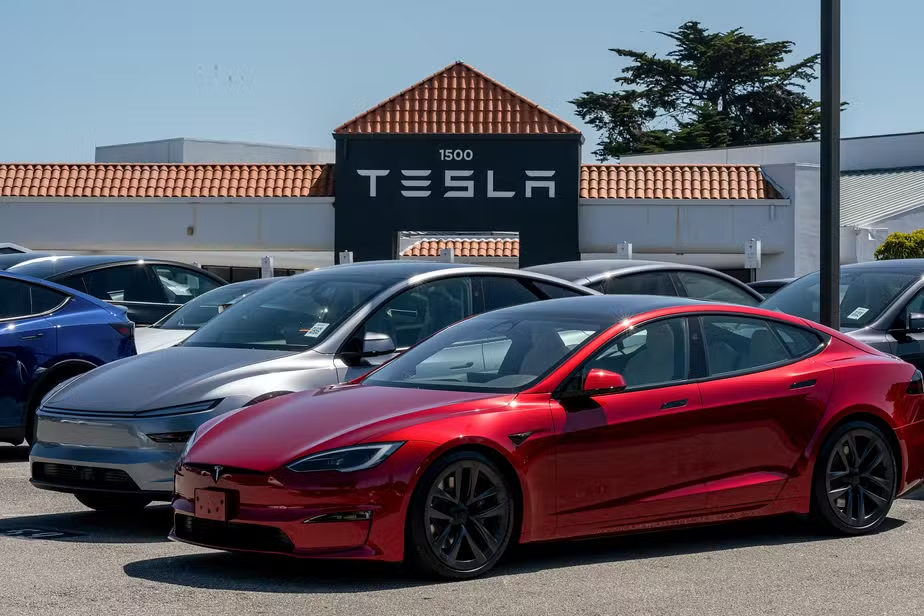In the dynamic realm of electric vehicles (EVs), Tesla has consistently been at the forefront, pushing the boundaries of innovation. In 2024, Tesla has once again captured global attention with a groundbreaking advancement in battery technology that promises to redefine EV efficiency. As the world shifts towards sustainable energy, Tesla’s latest battery breakthrough is poised to revolutionize the EV landscape, offering extended range, faster charging times, and enhanced durability. In this article, we’ll delve into how this innovation is reshaping the future of electric mobility and what it means for drivers, manufacturers, and the environment.
Tesla’s Battery Innovation: A New Era in Energy Density
1. Unveiling the 4680 Battery Cell
Tesla’s 2024 breakthrough centers around its new 4680 battery cell, named for its dimensions—46mm in diameter and 80mm in height. This new design is not just about size; it represents a significant leap in energy density and performance. According to Electrek, these cells are capable of delivering five times the energy capacity and six times the power of their predecessors, while reducing costs by 14%.
- Higher Energy Density: The 4680 cells promise a 16% increase in vehicle range, bringing the dream of long-distance electric travel closer to reality.
- Improved Power Output: These batteries boost the acceleration capabilities of Tesla vehicles, providing a more dynamic driving experience.
- Cost Efficiency: By streamlining production and reducing the number of cells needed per vehicle, Tesla can lower the overall cost of EVs, making them more accessible to a broader audience.
2. Revolutionary Manufacturing Techniques
Tesla’s innovation isn’t just in the battery itself but also in how it’s made. The company has introduced a new manufacturing process called “tabless” technology, which simplifies the internal structure of the battery cell. According to TechCrunch, this design not only enhances the thermal management of the cells, leading to greater efficiency, but also significantly accelerates production rates.
- Tabless Design: This innovation reduces electrical path resistance, improving heat dissipation and enhancing battery longevity.
- Faster Production: Streamlined manufacturing processes mean Tesla can produce these batteries at a scale and speed previously unimaginable, which is crucial for meeting the soaring demand for EVs.
Practical Implications for EV Owners
3. How to Charge Your Tesla Efficiently
With these new battery advancements, charging your Tesla is set to become more efficient and convenient. The improved thermal management allows for faster charging without compromising battery health.
- Use Superchargers: Tesla’s Supercharger network is optimized for the new 4680 cells, allowing for rapid charging speeds that can add up to 200 miles of range in just 15 minutes.
- Plan Charging Sessions: For long trips, utilize Tesla’s in-car navigation system, which now includes enhanced route planning based on the new battery capabilities, ensuring you’re always within reach of a charging station.
- Home Charging: Investing in a Tesla Wall Connector can maximize convenience, offering a full charge overnight with the new battery system.
4. Where to Buy and What to Compare
As these batteries become the standard in Tesla vehicles, prospective buyers are faced with new decisions. Here’s what to consider:
- Model Options: The 4680 cells are set to be available in the Model S, Model 3, Model X, and Model Y. Compare these models based on your range needs and performance preferences.
- Cost vs. Benefit: While initial models featuring the 4680 may carry a premium, the long-term savings in fuel and maintenance, along with the enhanced driving experience, offer compelling value.
- Environmental Impact: By choosing a Tesla with the new battery technology, buyers contribute to a reduction in carbon emissions, aligning with global sustainability goals.
The Global Impact of Tesla’s Battery Breakthrough
5. Leading the Charge Towards a Sustainable Future
Tesla’s 2024 battery innovation is more than a technological marvel; it’s a pivotal step in the broader movement towards sustainable transportation. According to Bloomberg Green, widespread adoption of these advanced batteries could substantially decrease global reliance on fossil fuels, lowering greenhouse gas emissions and mitigating climate change impacts.
- Reduced Carbon Footprint: The enhanced efficiency and longevity of the 4680 cells mean fewer resources are needed over the vehicle’s lifetime.
- Spurring Industry Change: As Tesla sets new benchmarks, other automakers are likely to follow suit, accelerating innovations across the EV industry.
- Energy Independence: By producing more efficient batteries, Tesla supports the shift towards energy independence, reducing the need for non-renewable resources.
Conclusion: Driving Towards Tomorrow
Tesla’s 2024 battery breakthrough is a testament to the power of innovation in driving change. With the potential to transform EV efficiency, reduce costs, and bolster sustainable practices, this advancement heralds a new era in electric mobility. As Tesla continues to pioneer breakthroughs, the future of transportation looks increasingly electric, efficient, and environmentally friendly.
Whether you’re an EV enthusiast or a potential buyer, staying informed about these developments can help you make more sustainable choices. Are you ready to join the electric revolution? Share your thoughts or experiences with Tesla’s new battery technology in the comments below, and let’s drive the conversation towards a greener future.

